The Land of Dense Forests: Congo Class 5 Notes SST
| Table of contents |

|
| The Democratic Republic of the World Congo |

|
| Climate |

|
| Vegetation |

|
| Wildlife |

|
| Economic Resources |

|
| Life of People |

|
| Transport |

|
| Cities |

|
The area between the Tropic of Cancer and the Tropic of Capricorn is called the equatorial region. It's known for its hot and rainy weather. The Democratic Republic of the Congo is located in this area. It's the second-largest country in Africa, after Algeria, covering about 23.5 lakh square kilometres. The Equator runs through the northern part of the country.
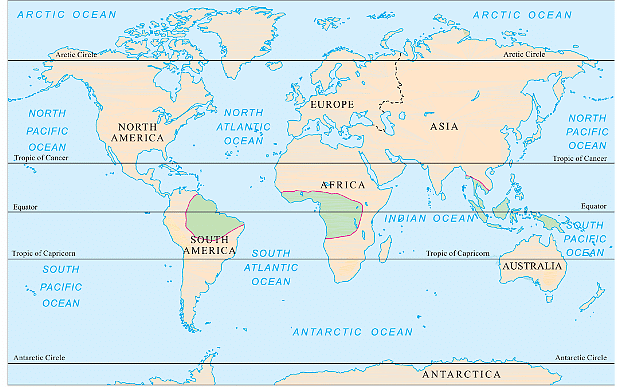 Equatorial forests of the world
Equatorial forests of the world
The Democratic Republic of the World Congo
The Democratic Republic of the Congo (DRC) is the second biggest country in Africa, right after Algeria. It covers an area of about 23.5 lakh square kilometres. The Equator runs through the northern part of the country.
Location
The country is situated in the middle of Africa. It is bordered by nine other countries.
 Democratic Republic of the Congo
Democratic Republic of the Congo
Land
The Congo River, the second-longest river in Africa, flows through the country. It's often called the main route through Central Africa.
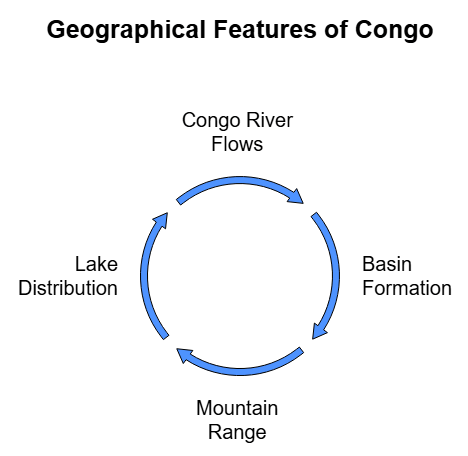
- The country is located in the middle of a large basin formed by the river, which is filled with rainforests and surrounded by mountains and plateaus.
- In the northeast are the Ruwenzori mountains, with Mount Margherita as the tallest peak.
- There are four big lakes in the country - Albert, Edward, Kivu, and Tanganyika, all found along the eastern border.
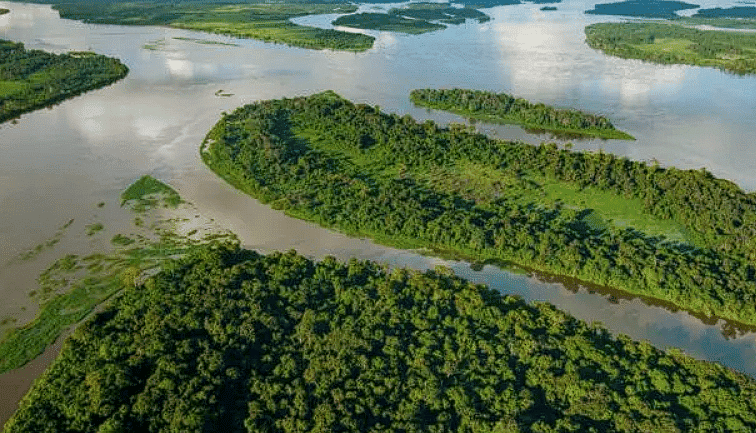 Congo River
Congo River
Note: The Congo River starts in the highlands of East Africa and flows into the Atlantic Ocean. The well-known Inga Falls are found in the lower part of the river.
Climate
The country has a tropical climate, which means it's hot and rainy all year round. It's often very humid, which can feel uncomfortable.
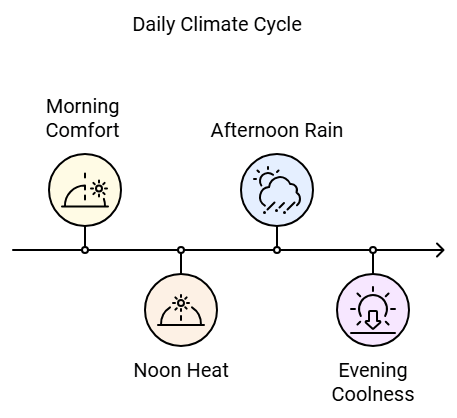
- Mornings are usually nice, but by noon, it gets extremely hot and uncomfortable. As the day goes on, clouds form, leading to heavy rain in the afternoons.
- Evenings and nights are cooler and more comfortable.
Vegetation
In places that are hot and humid, trees and other plants grow fast. The forests there have many different kinds of trees, most of which are tall and form a thick layer of leaves at the top. This layer is so thick that even sunlight can't get through it. These forests stay green all year long and are known as evergreen forests. They're so thick that it's hard to move through them.
Wildlife
The forests are home to many animals. You can find gorillas, chimpanzees, monkeys, bonobos, and baboons there. In the marshy areas, you'll see hippos, rhinos, and elephants.
- Rivers and lakes are filled with crocodiles, alligators, and fish. In the Ituri forests, you'll find okapis and antelopes. Lions, cheetahs, hyenas, giraffes, and buffaloes live in the grasslands.
- Birds like pelicans, ducks, owls, and eagles are also seen in this area
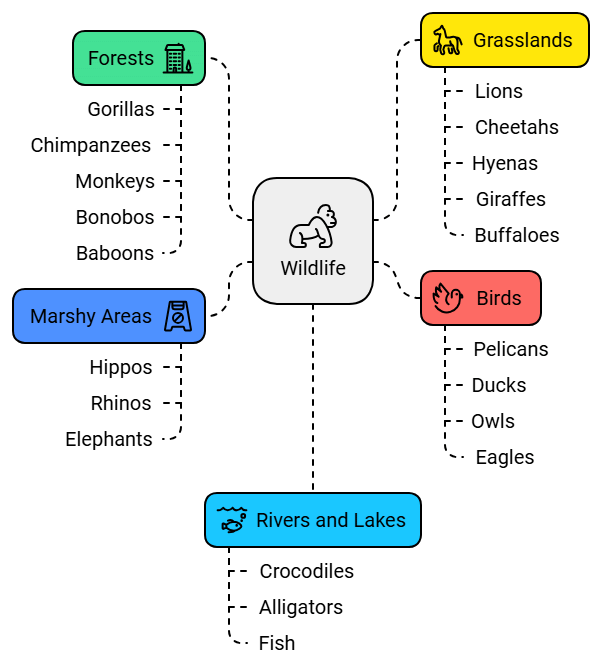
Economic Resources
Farming is the main job for people in the country. They also work in forestry, fishing, and raising animals. Large areas under forests have been cleared for farming.
- Farmers grow food crops like rice, maize, and cassava, as well as cash crops like cocoa, coffee, tobacco, cotton, rubber, and oil palm. Some cash crops are sold to other countries.
- The farming methods used are old-fashioned and basic. The country has lots of valuable minerals like gold, cobalt, copper, petroleum, and diamonds. Most of these minerals are sold to other countries.
- There aren't many industries, and the ones that exist mostly use materials from farming. Some things like shoes and clothes are made in the cities.

Life of People
The country has a small population, with most people living in scattered villages. Some have moved to towns to work in mines and factories.
- Cassava, a root crop, is the main food for people. It's dried and turned into flour for making bread. Fish is also important in their diet.
- The majority of the population are Bantu people. They're tall, with curly hair, and speak languages from the Bantu language group.
- They stick to traditional ways of life, enjoying music, dance, and wearing colorful clothes on special occasions.
- The original inhabitants are Pygmies, also known as the Bambuti or Mbuti. They're very short, less than 150 cm tall. In the past, European rulers forced Pygmies into the forests, where they hunted and gathered for food.
- The few remaining Pygmies mostly live in the Ituri forest in the northeast. They live in huts, moving around to find food, and still lead simple lives.
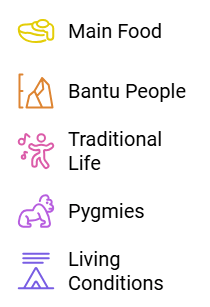
Transport
The country doesn't have good roads and railways because the dense forests make it hard to build them, and the ones that exist aren't well taken care of. However, there are some roads and railways in certain areas, although they're not in great conditionBecause there are many rivers, most people travel by water. Airplanes are also a popular way to get around because there are over 200 airports in the country, making it fast and convenient to travel long distances.
Cities
About 30 percent of all the people live in towns and cities. Kinshasa is the biggest city and also the capital. It's an important place for business and industry. Lubumbashi is another big city, especially known for its minerals. Other large cities include Kananga, Kisangani, Likasi, and Kikwit. Matadi is a city with a port.
The country is getting better quickly. The money earned from selling things to other countries is being used to make things better, like roads and buildings, and to give people more things they need.
|
33 videos|264 docs|50 tests
|
FAQs on The Land of Dense Forests: Congo Class 5 Notes SST
| 1. What is the climate like in the Democratic Republic of the World Congo? |  |
| 2. What types of vegetation are found in the Democratic Republic of the World Congo? |  |
| 3. What kind of wildlife can be found in the Democratic Republic of the World Congo? |  |
| 4. What economic resources does the Democratic Republic of the World Congo possess? |  |
| 5. How do people live in the Democratic Republic of the World Congo? |  |





















